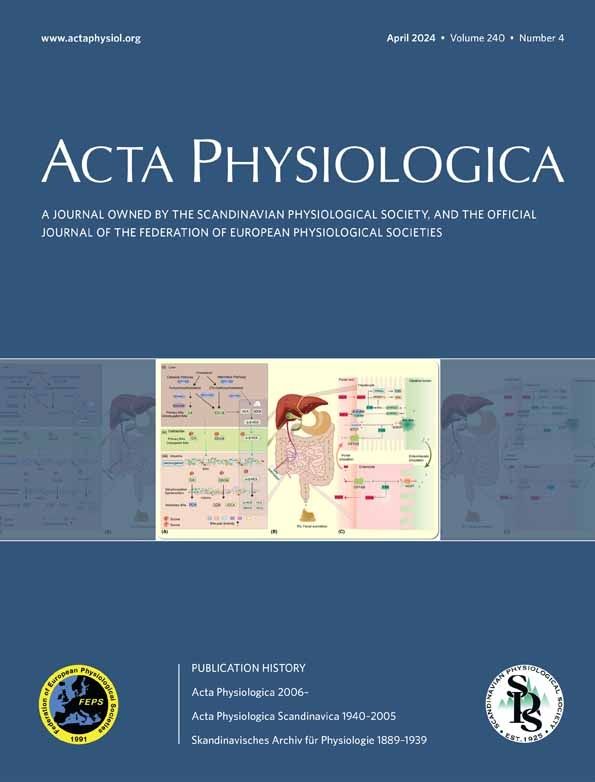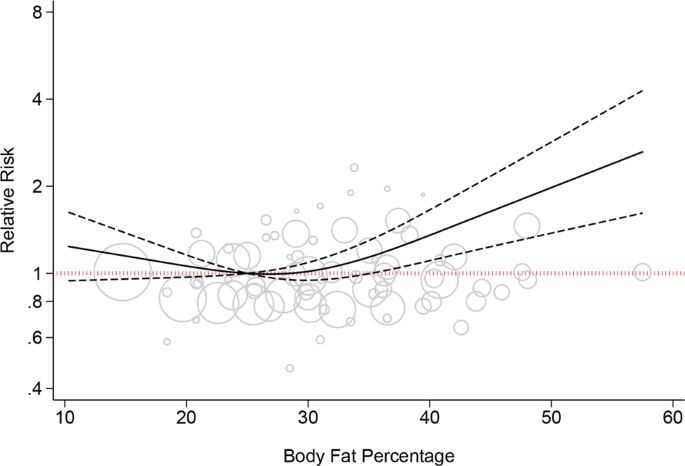New work out in preprint with @kevinmurachphd.bsky.social
12.10.2025 17:01 — 👍 1 🔁 0 💬 0 📌 0

Nathan Serrano et al. present this #Opinion piece providing a critical evaluation of muscle memory theory 💭 💪
🔗 physoc.onlinelibrary.wiley.com/doi/10.1113/...
15.09.2025 16:00 — 👍 1 🔁 2 💬 0 📌 0

Muscle memory theory: A critical evaluation
Click on the article title to read more.
A recent opinion article providing a nuanced view on the current standing of Muscle Memory Theory physoc.onlinelibrary.wiley.com/doi/10.1113/...
07.08.2025 03:22 — 👍 0 🔁 0 💬 0 📌 0

Brushing up on some new confocal imaging techniques
25.07.2025 03:15 — 👍 0 🔁 0 💬 0 📌 0

The impact of life-long strength versus endurance training on muscle fiber morphology and phenotype composition in older men | Journal of Applied Physiology | American Physiological Society
Aging is typically associated with decreased muscle strength and rate of force development (RFD), partly explained by motor unit remodeling due to denervation, and subsequent loss of fast-twitch type II myofibers. Exercise is commonly advocated to counteract this detrimental loss. However, it is unclear how life-long strength versus endurance training may differentially affect markers of denervation and reinnervation of skeletal myofibers and, in turn, affect the proportion and morphology of fast-twitch type II musculature. Thus, we compared fiber type distribution, fiber type grouping, and the prevalence of atrophic myofibers (≤1,494 µm2) in strength-trained (OS) versus endurance-trained (OE) master athletes and compared the results to recreationally active older adults (all >70 yr, OC) and young habitually active references (<30 yr, YC). Immunofluorescent stainings were performed on biopsy samples from vastus lateralis, along with leg press maximal strength and RFD measurements. OS demonstrated similar type II fiber distribution (OS: 52.0 ± 16.4%; YC: 51.1 ± 14.4%), fiber type grouping, maximal strength (OS: 170.0 ± 18.9 kg, YC: 151.0 ± 24.4 kg), and RFD (OS: 3,993 ± 894 N·s−1, YC: 3,470 ± 1,394 N·s−1) as young, and absence of atrophic myofibers (OS: 0.2 ± 0.7%; YC: 0.1 ± 0.4%). In contrast, OE and OC exhibited more atrophic fibers (OE: 1.2 ± 1.0%; OC: 1.1 ± 1.4%), more grouped fibers, and smaller proportion of type II fibers (OE: 39.3 ± 11.9%; OC: 35.0 ± 12.4%) than OS and YC (all P < 0.05). In conclusion, strength-trained master athletes were characterized by similar muscle morphology as young, which was not the case for recreationally active or endurance-trained old. These results indicate that strength training may preserve type II fibers with advancing age in older men, likely as a result of chronic use of high contractile force generation. NEW & NOTEWORTHY Aging is associated with loss of fast-twitch type II myofibers, motor unit remodeling, and grouping of myofibers. This study reveals, for the first time, that strength training preserves neural innervation of type II fibers, resulting in similar myofiber type distribution and grouping in life-long strength-trained master athletes as young moderately active adults. In contrast, life-long endurance-trained master athletes and recreationally active old adults demonstrated higher proportion of type I fibers accompanied by more marked grouping of type I myofibers, and more atrophic fibers compared with strength-trained master athletes and young individuals. Thus, strength training should be utilized as a training modality for preservation of fast-twitch musculature, maximal muscle strength, and rapid force capacity (RFD) with advancing age.
Lifelong strength training had greater muscle fiber size and type II fibers compared to endurance training. This suggests strength may be more beneficial vs endurance in old age. doi.org/10.1152/japplphysiol.00208.2023
19.02.2025 02:56 — 👍 0 🔁 0 💬 0 📌 0

Muscle physiology and its relations to the whole body in health and disease
Click on the article title to read more.
Along the same line as our most recent publication, here is another paper outlining similar concepts of muscle health
Muscle physiology and its relations to the whole body in health and disease - Groeneveld - Acta Physiologica - Wiley Online Library
doi.org/10.1111/apha...
16.02.2025 04:17 — 👍 0 🔁 0 💬 0 📌 0

Type I (slow twitch) fibers are well known as the endurance type for their high metabolic activity whereas type II fibers are more related to high power but low endurance ability due to a lower ability to metabolize fats and insulin sensitivity. Within obesity, individuals may express more type II
16.02.2025 01:27 — 👍 0 🔁 0 💬 0 📌 0
Lift the pedosadist / trafficking networks and the entire global oligarchy will be in the net. - Heather Marsh, 2014 #OpDeathEaters #Anonymous
EMBO is the organization of more than 2,100 leading researchers that promotes excellence in life sciences in Europe and beyond.
https://www.embo.org/
A legacy of discovery. A future of innovation.
The International Society for Microbial Ecology is a non-profit association and owner of the ISME Journal and ISME Communications.
Next symposium #ISME20 in Auckland, New Zealand in August 2026.
Journal of Cell Science (JCS) publishes cutting-edge science encompassing all aspects of cell biology. JCS is a community journal published by The Company of Biologists (@biologists.bsky.social), a not-for-profit organisation. #cellbiology #cellbio
Senior Scientist that investigates the molecular mechanisms that regulate skeletal muscle mass and function in health and in various disease states. Protein synthesis, ubiquitin biology.
https://scholar.google.com.au/citations?user=ICAcUqUAAAAJ&hl=en
Official site for the Journal of Muscle Research and Cell Motility.
JMRCM publishes original research on the excitation and contraction of muscle and the processes underlying contractility and motility of cells. https://link.springer.com/journal/10974
Professor of Physiology at Karolinska Institutet - SRP Diabetes & University of Copenhagen - Center for Basic Metabolic Research. Lifelong Athlete. Member of Nobel Assembly, Royal Swedish Academy of Sciences, Keystone Symposia Board, & Past President EASD.
Geneticist, Skeletal Muscle, Drug development, Gene therapies. Non-coding RNA, and Zebrafish Aficionado. Lover of all things muscle. All posts are my own. Instagram @thealexanderlab
Lab website: https://www.uab.edu/medicine/peds/research/division-researc
Uni. of Florida. Interested in Sepsis-induced Myopathy and Exertional Heat Stroke. Associate Editor for the Journal of Applied Physiology. Views are my own!
Assistant Professor | Skeletal Muscle, Atrophy, Aging, Protein Quality Control (PQC) | Views my own | 📚💪🏼🇬🇧
https://scholar.google.com/citations?user=BuLaLdsAAAAJ&hl=en
Nature Aging is a thematic journal from the Nature Portfolio that serves the broad aging research community. Follows & posts ≠ endorsements.
Working to resolve sports injuries in human musculoskeletal tissue at Bispebjerg-Frederiksberg Hospital and Department of Clinical Medicine
https://www.ismc.dk/
Clinical Professor of Muscle Physiology and Regeneration after Traumatic Soft-tissue Injury @ismcopenhagen.bsky.social
https://orcid.org/0000-0002-2017-4580
#MyoBlue
Europe's largest network of physiologists. For 150 years we have been inspiring discovery for healthier lives.
Scientist, cyclist, traveler, want-to-be-oenophile, sleeps under the stars when possible.
A peer-reviewed, online, Open Access journal publishing across all areas of physiology. A collaboration between The Physiological Society and the American Physiological Society.
Website: https://physoc.onlinelibrary.wiley.com/journal/2051817x
Studying muscle in the Ozark mountains - M3R Lab. Bourbon aficionado. Amateur watch builder. Average exerciser. My wife says I’m a “six wing five”.
https://musclemasslab.uark.edu/
The Journal of Physiology publishes original research in all areas of physiology and pathophysiology that illustrates new physiological principles or mechanisms.








